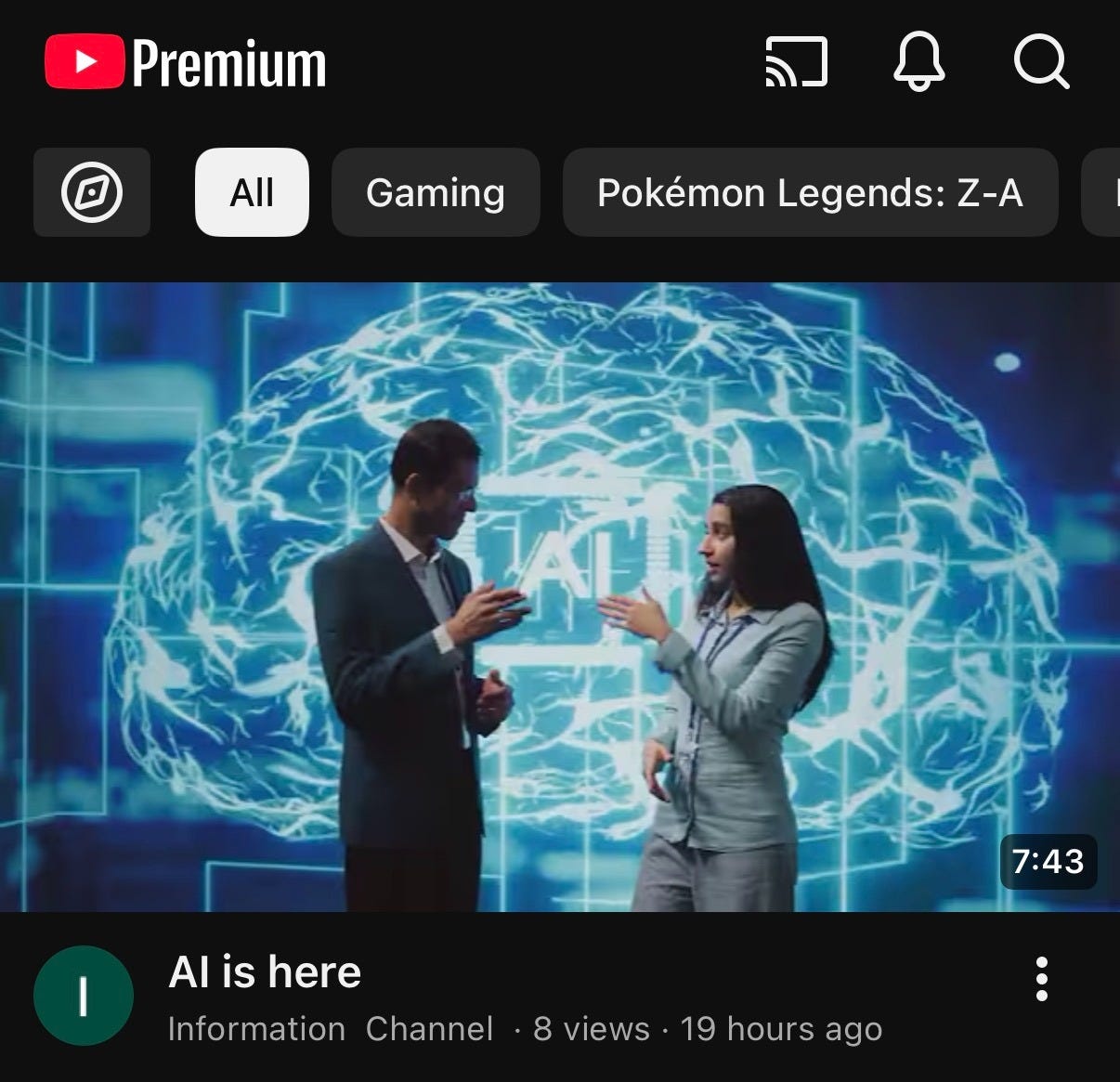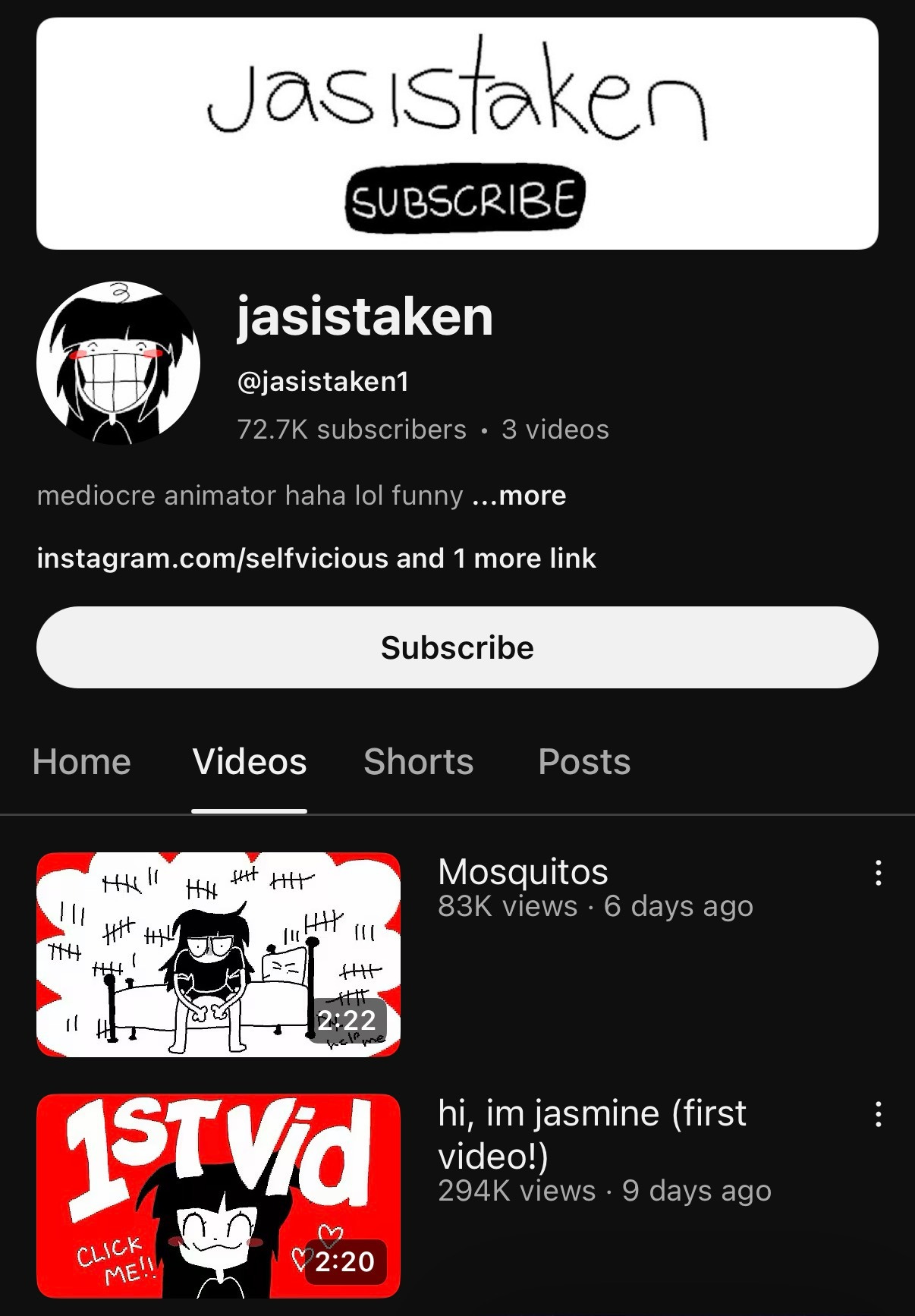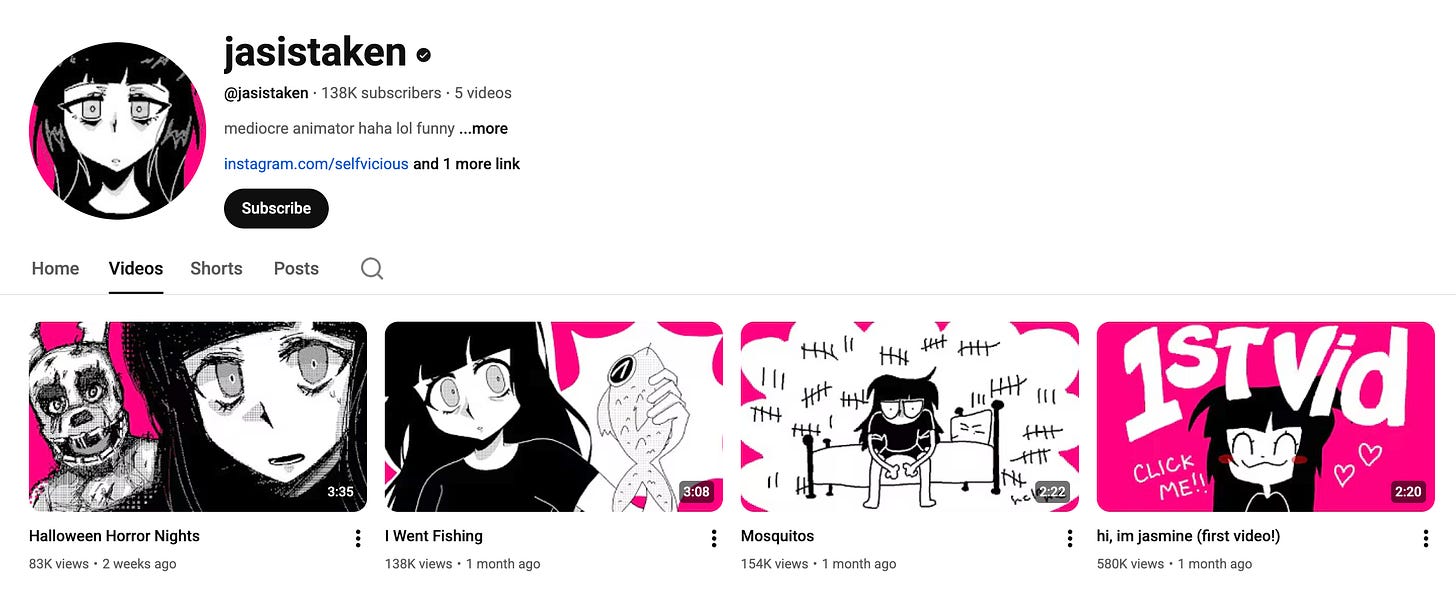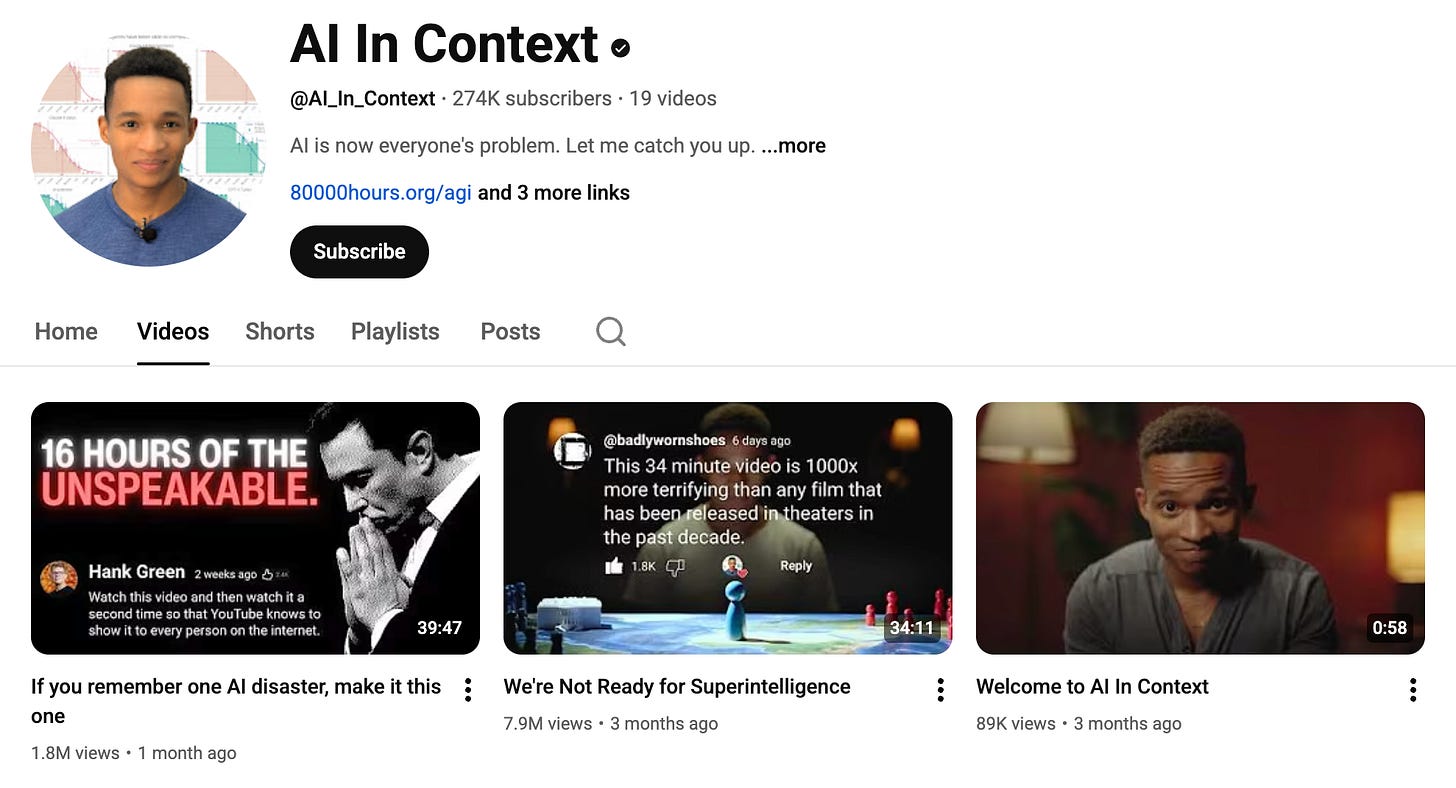2025 is a uniquely good time to start a YouTube channel
2014 was a terrible time to start a YouTube channel. But "the algorithm" has changed.
2024-2025 is the best possible time to launch a new YouTube channel. This descriptively true now in a way that was NOT true in 2014, which was probably the worst possible year to launch a new YouTube channel.
In 2014, incumbents on YouTube had a huge advantage in a way that’s not true today (largely due to changes in the way the recommendation algorithm works; more on this later). A small channel in 2014 had to compete with all of big YouTube channels that go their start during the initial 2007-2010 “land grab” when YouTube was just a hobby, and the explosion of 2010-2012 that coincided with “YouTuber” becoming a viable career path.
2010 is when the money (and incentives) became real
In December 2010, YouTube launched TrueView ads (the ads you can skip), which is when partner revenue became real in practice. In December 2011, the homepage started to heavily recommend channels, and in 2012, YouTube switched to a new recommendation algorithm that favored watchtime over views, which effectively locked in the winners who could keep viewers; this is the era in which PewDiePie rose to become the biggest YouTuber on the platform.
By 2013, the frontier was mostly staked: growth was still possible, but all the cheap land was gone. When people went to YouTube, the homepage was filled with “popular, but corporate-safe” videos, like Jimmy Kimmel and music videos from big pop stars. If you were logged in, you’d see your subscriptions, which were just incumbents of a different sort. If you were to launch a brand new channel in 2014, what hope did you have of being seen?
The “upset”
But in 2015 and 2016, something interesting happened on YouTube: the homepage became more personalized based on your viewing habits. “The algorithm” began to more fully emerge, not just as a way of saying “people who watched this video also watched this other video,” but “viewers with habits like yours also seem to like videos like this.” Subscriptions fell in prominence, and so to counterbalance this, YouTube introduced “the bell” to give you a further level of opt in beyond a basic sub.
And in 2016, it became clear that the paradigm had changed: the incumbents who had benefitted from the old status quo began complaining that “my subscribers aren’t seeing my videos.” Big YouTube stars saw 30-40% drops in viewership. PewDiePie blamed the new recommendation algorithm.
This was often couched by the big YouTubers as “YouTube hurting creators.” And for people who had “made a living on YouTube” from AdSense revenue for the past few years, it certainly must have been painful to lose 30-40% of their income.
However, what was bad for the big incumbents was good for everyone else: big YouTubers like PewDiePie and H3H3 got less traffic in 2016 because YouTube was more willing to direct viewer eyeballs to smaller, less-established creators.
By 2017, you could start a brand new YouTube channel, upload a video, and if it was something that people wanted to see (getting good click-through and retention), it could find a big audience, even if the channel uploading it had 0 subscribers.
I know this from personal experience, because I was part of an indie game studio that started a new YouTube channel and uploaded a game trailer in January 2017 that went on to get a lot of views:
2016-2022 was a new era on YouTube in which it became somewhat easier for newer channels to get attention and “break onto the scene.” But things moved even further in the direction of being “friendly to new creators” when TikTok emerged as a competitor to YouTube.
The TikTok era
TikTok’s greatest strength was (and still is) its recommendation algorithm: it’s really good at figuring out what you in particular are into, and serving you and endless supply of that.
But if you use TikTok for a few hours a day, you start to notice something interesting: TikTok starts serving you videos with a tiny number of impressions. Sometimes, you’re served a video and it seems like you’re literally the first person to see it. This is because if you are a power user who watches for hours a day, they know they can get away with serving you a few “potentially bad” videos without you bouncing off the platform. And so you become part of the service that TikTok provides: as a power user who watches for hours every day, you get to be the filtering mechanism that determines whether new videos get sent out to wider audience.
YouTube finally copied the TikTok playbook in in 2023
The exact same thing that TikTok did is now happening on YouTube. I am a YouTube “power user,” I am on YouTube for 10+ hours per week. And every day or so, I see a recommendation for a video like this one.
I could share 100+ of “videos with <20 views,” but a lot of them are actually faces of real people who seem quite earnest about wanting to share their thoughts from their car or bedroom, and I don’t wish to dunk on them here. The point is, YouTube is willing to show me videos that have literally single-digit view counts. It does this on an almost daily basis.
To this, one might ask: “why is YouTube putting this crap in my recommendations?”
The answer to this question is quite similar to the answer of the question: “why do guilty people get a trial?”
Guilty people get a trial because we do not know that they are guilty until after they’ve been put on trial. And “crappy videos” get put on your recommendation because YouTube does not know whether they are actually “crappy” until it has “put them on trial” by putting them in front of users (who will then determine the video’s click-through rate and retention metrics based on how they react). If that video from a brand new channel has a really high CTR, then maybe it’s not crap, and deserves to seen by more people!
This is why since ~late 2023, it has been descriptively true that “this is the best time to start a YouTube channel.” If you upload a video, YouTube WILL put it in front of people, you WILL get your day in court, and if the video is good, you WILL get rewarded for it. A brand new channel can take off in a big way if they immediately start uploading videos that people want to click on and watch.
Here’s a screenshot I took a month ago:
People saw a thumbnail that promised “cute original animation.” And a lot of them clicked it, and a lot of them watched it all the way through, and YouTube recognized that and said, “hey, this is the kind of content we should push to people if we want them to be delighted and stay on our platform so that they can continue watching ads.”
Here’s how she’s doing now, by the way:
(Something to be learned here: even as her channel has grown, her new uploads have fewer videos than the old uploads. YouTube videos have a long tail: even at a month old, her debut is still getting recommended to new viewers, and so it’s not that surprising that the videos that have been on the platform the longest have the most views.)
80000 Hours’ new YouTube channel about AI safety, started in mid 2025, is also doing quite well:
How did they do it? How did a brand new YouTube channel that no one had ever heard of get this level of viewership? They made really high-effort, high-quality videos that people actually want to watch. (One would certainly hope so, given that they spent over $100,000 on their first big video, though it should of course be said that you can’t just throw money around and expect it to translate into views: the creative team here was very skilled at using that budget to create high-quality content that people want to watch.)
This is why I am starting a YouTube channel in 2026
A few things are true about me:
I like progress, and I want there to be more of it.
I like good YouTube videos, and I want there to be more of them.
I’ve spent the past ~8 years getting good at YouTube. But that time was spent working on other people’s channels. This was good: I learned a lot more by working for big YouTubers than I would have on my own. But I’ve never had the opportunity to bring my expertise to bear on a YouTube channel that I had full creative control over.
Given these facts, and the observation that “now is the best possible time to start a YouTube channel,” I decided that “I should start a YouTube channel where I talk about how progress is good, and how we can get more of it.”
October 16-19 was Progress Conference in Berkeley, and I decided to meet with several people attending the conference to talk about this, and several of them agreed that it would be a good idea for me to start a YouTube channel. Some of them also asked “how much money would it take to make that happen?” and I now find myself in possession of the budget to spend early 2026 launching a YouTube channel.
Footnote: if now is such an opportune moment, why 2026 and not now?
Q4 is “holiday shopping season,” and that means more advertisers bidding for ad space, which means higher CPMs, which means that YouTubers who make money through AdSense have an added incentive to upload more videos in Q4, and indeed they do. (Price signals work: higher CPMs resulted in a greater supply of newly-uploaded videos!)
I, however, am not making money through AdSense. I am trying to “get a new channel off the ground” and get viewership for a prosocial message (with a channel that will maybe become revenue-positive one day). The early months are not going to be revenue-generating.
Given that, it makes no sense for me to join the Q4 feeding frenzy, when freelance editors are at their busiest, and when more big YouTubers are uploading (resulting in more competition for eyeballs).
But “the holiday season”CPMs crater in January. The editors and thumbnail artists I want to hire will have more availability, and there will be less competition for eyeballs as the big YouTubers who were in an uploading frenzy in Q4 take a break from uploading.
And, beyond that, I’m going to spend some amount of time in preproduction. That’s what I’m doing with the bulk of November: I’ll be spending at least a few days every week writing about progress studies, and seeing which ideas people will connect with. If you want to see more of my future posts about progress studies, you can subscribe to this newsletter:





